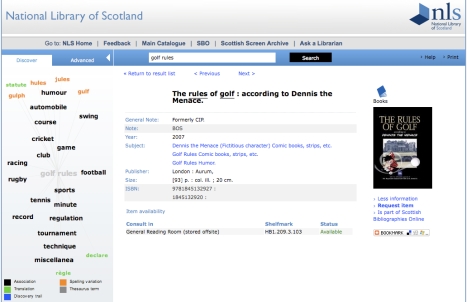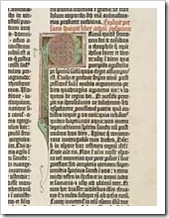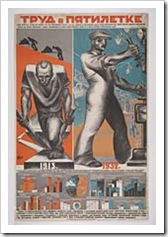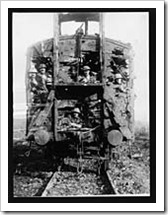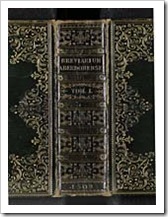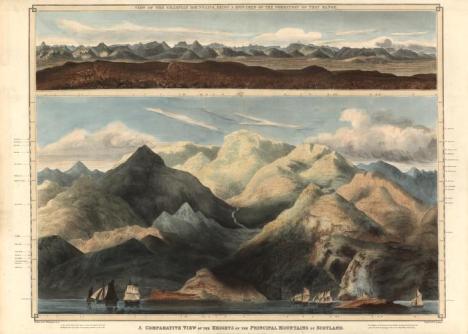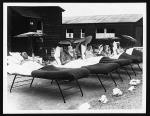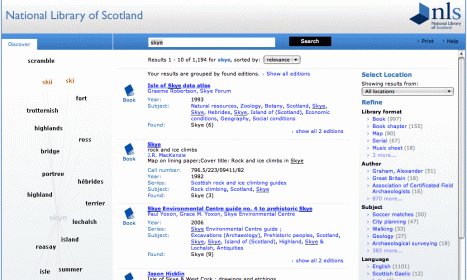Today I’ve put a number of new photographs into our Flickr account, as a draw to the whole collection that forms part of the papers of Field Marshal (Earl) Haig (1861-1928). The images have now been through the quality assurance process prior to their inclusion into the discovery interface of the Digital Object Database that is in the final stages of being prepared for the shift from beta to live release. Note that the selections are randomly taken from the thousands of available images and are in no particular order.
Some of the pictures are very striking. For example;
The official description of the collection is a follows;
“These images form part of the papers of Field Marshal (Earl) Haig (1861-1928), held by the National Library of Scotland. Like many World War I generals, Haig remains a controversial figure.
The collection contains diaries, papers and photographs from every part of Haig’s career, the Great War diaries being of special importance to historians. Photographs in the “Official Photographs” series (which were destined for publication and have captions on the back describing the image) are in black-and-white. World War I saw the development of a system of ‘official’ reporting by professionals especially recruited into the forces. Initially reluctant to allow cameras near the fighting, it took some time for the authorities to appreciate the propaganda and recording potential of photography.
These photographs provide us with an invaluable record of how the Government and Military wanted the war perceived. Official photographers were encouraged to record morale-boosting scenes of victory and comradeship. Despite the restrictions placed on them, official war photographers succeeded in giving the most comprehensive visual account of the war. It is important to remember that these images were propaganda; few that could depict the war in a disheartening or disconcerting way passed the censors. As a result the photograph taken was often posed. They were intended to reassure those at home and boost morale. They were printed in newspapers, and were intended to confirm that ‘Tommy’ was winning the war.
Unless otherwise stated, titles are from the photographs’ original captions. Headings (in block capitals), captions and part references, all written in pencil, are generally on the back of each original. “Western Front”, mentioned in many of the headings, refers to a narrow border of land between Belgium and France where the Allies dug trenches from the North Sea to the Swiss Frontier, i.e. the fighting zone in France and Flanders, where the British, French, Belgian and later American Armies faced that of Germany. For three years, neither side advanced more than a few miles along this line.”
The ‘RLS Haig “Official Photographs”‘ contains the following 6 items:
- Ernest Brooks
Ernest Brooks was the first British official war photographer to be assigned to the Western Front in 1916. Previously a ‘Daily Mirror’ photographer, he was given the honorary rank of Second Lieutenant. His remit was to take as many photographs as possible, with as much variety as possible. Using his inconspicuous hand-held camera Brooks was free to wander, sometimes capturing his subjects unawares. Many of the images taken by Brooks were used to fuel the propaganda machine at home and abroad. Despite this Brooks, who was very aware of composition and light, produced some very artistic and thought-provoking images.
- John Warwick Brooke
John Warwick Brooke, of the Topical Press Agency, was one of two British official war photographers, the first being Ernest Brooks, to be sent to the Western Front in 1916. The demands placed on both men were heavy. They had to take as many photographs as possible, with as much variety as possible; a difficult task for two men covering an army of over two million. Despite this, Warwick Brooke managed to take what would become some of the most memorable images of World War I.
- Tom Aitken
Tom Aitken was a newspaper photographer from Glasgow who was assigned in December 1917 as a war photographer along with David McLellan and Armando Consolé. McLellan’s work also features in the National Library of Scotland’s Haig Papers. War photographers held a hybrid position during World War I, being part of yet not ultimately responsible to the military.
- David McClellan
Formerly a photographer with the ‘Daily Mirror’, a newspaper which led the field in pictorial journalism, McClellan was appointed as an official war photographer in December 1917 along with Tom Aitken whose work also features in this collection. McClellan is especially noted for his work capturing the huge scale of operations on the Front.
- French Press Stamps
Photographs from the Haig “Official Photographs” series with French Press Stamps.
- Canadians
Photographs from the Haig “Official Photographs” series that are connected with Canadian troops.
I hope you enjoy this thought provoking collection – I certainly have.
Filed under: Uncategorized | Leave a comment »


